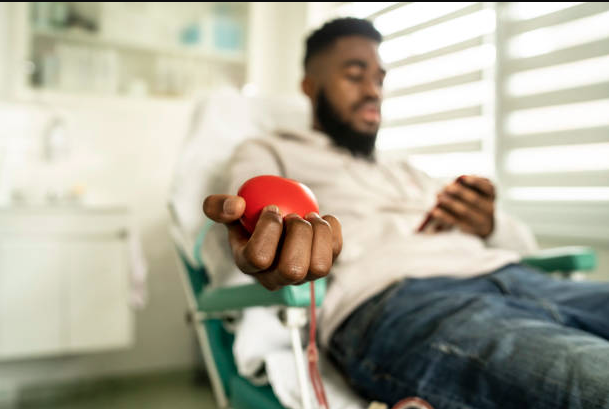If you’re thinking about donating plasma for the first time, or even if you’re a regular donor looking to improve your experience, you’ve come to the right place. Donating plasma is one of those quiet but incredibly powerful ways to give back. It doesn’t just help—it heals. But just like any meaningful process, it helps to be prepared.
From knowing what to expect at your appointment to understanding how to take care of yourself after, this guide is packed with donating plasma tips to make the whole experience smoother, more comfortable, and maybe even a little enjoyable. Let’s walk through it.
Understanding the Plasma Donation Process: What to Expect
The Science Behind Plasma: Why It Matters
Red blood cells may receive more attention than plasma, but don’t let deceive you. Plasma is vital. More than half of your blood is made up of this golden fluid, which distributes proteins, hormones, and minerals throughout your body. It contains a wealth of beneficial substances like clotting factors and antibodies, which are essential for the treatment of diseases like hemophilia, burns, and immunological deficiencies.
Donating plasma supports routine medical treatments that people depend on, not just emergencies. Frequent contributors play a crucial role in maintaining that lifeline as demand rises annually.
Your Plasma Donation Journey: Step-by-Step
Registration & Screening
The process begins with a brief check-in. You will be asked about your medical history, get a quick physical, and have your vitals (blood pressure, hemoglobin, etc.) taken. We assure you nothing frightening.
The Donation
The actual procedure? Between forty-five and an hour is the norm. After drawing your blood, plasmapheresis is used to separate the plasma, and the remaining material is given back to you. It’s effective, safe, and most donors feel completely great both before and after.
Recovery Time
You’ll chill out for a bit afterward—think juice, snacks, and some rest while your body rebalances. You’ve just done something amazing, so take a few minutes to relax.
Donating Plasma Tips: How to Prep Like a Pro
Fuel Up Smart: Nutrition & Lifestyle Tips
Food is important. Increase your protein intake by eating more lean meats, dairy products, beans, and nuts a few days before giving. Add meals high in vitamin C, such as bell peppers or oranges, to improve your body’s absorption of iron. Avoid fatty foods on the day of donation, as they may affect the quality of your plasma.
Also, get some rest! Your body will thank you.
Hydration Hacks That Actually Work
One of the finest things you can do is to stay hydrated because plasma is primarily made of water. Before donating, try to consume at least 16 ounces of water, and during the days before your appointment, attempt to stay hydrated. Pro tip: keep a favorite water bottle close at hand. Fruit-infused drinks, coconut water, and herbal teas can also be used to keep things interesting and hydrated.
Timing Is Everything
Choose a moment when you’re at your best; don’t donate just after a tough shift or a workout. Due to your greater levels of hydration, morning appointments may be the best option. Additionally, for a more laid-back atmosphere, visit during the week when centers are typically less crowded.
After Donation: Caring for Yourself Post-Plasma
Rest Up and Recover
It’s acceptable to relax because you just sacrificed something for someone else. For a whole day, refrain from strenuous exercise or heavy lifting. Hydrate, take breaks, and pay attention to your body. Don’t ignore your unhappiness; if necessary, speak with your doctor or the staff.
Rebuild with Food
Post-donation is a great time for a healthy, balanced meal. Focus on protein, iron-rich foods (like spinach, lentils, or red meat), and hydrating snacks. Electrolyte drinks or even a banana can help replenish what you’ve lost. It’s also the perfect excuse to treat yourself a little—guilt-free.
Know What’s Normal (and What’s Not)
A little bruising or tiredness? Totally normal. But if you’re feeling super dizzy or short of breath or notice anything odd at the needle site (like swelling or redness), reach out for help. Better safe than sorry.
The Bigger Picture: How Your Plasma Donation Changes Lives
Real-Life Impact
Your contribution is a part of someone’s survival story, not simply a drop in the bucket. People suffering from autoimmune diseases, burn victims, and children with unusual ailments all depend on plasma therapy to survive and recover. Donating a bag is a direct path to recovery.
Find Your Community
Plasma donation is not a one-time event; it can become a way of life. Whether in online networks or in donation centers, many donors make connections with other people. Sharing anecdotes, exchanging advice, or simply experiencing a sense of camaraderie can enhance the significance of the event.
Become an Advocate
Donating isn’t the only thing you can do. Join a local blood drive campaign, educate your friends, or share your experience. People are more inclined to try plasma themselves if they have a better understanding of how it operates. Who knows? The next donor who saves lives might be motivated by your voice.
Final Thoughts
Plasma donation is a potent way to give back, and it doesn’t have to be scary. You’ll be more than prepared to enter your appointment with assurance and leave feeling that you’ve made a difference if you follow these plasma donation instructions.
Keep spreading the word, stay hydrated, eat healthily, and get enough sleep. Someone out there is depending on you, and you have this.

